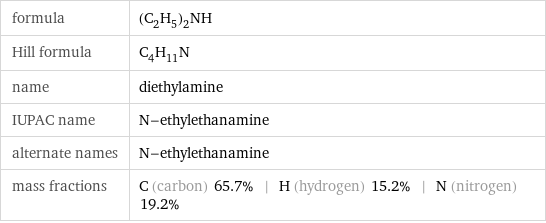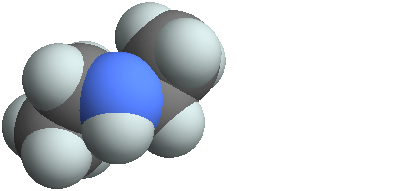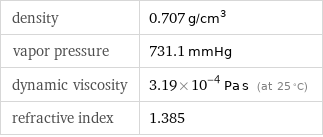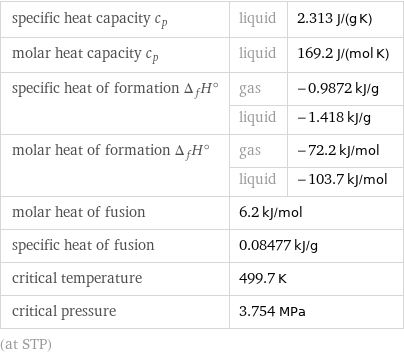Input interpretation

diethylamine
Chemical names and formulas

formula | (C_2H_5)_2NH Hill formula | C_4H_11N name | diethylamine IUPAC name | N-ethylethanamine alternate names | N-ethylethanamine mass fractions | C (carbon) 65.7% | H (hydrogen) 15.2% | N (nitrogen) 19.2%
Lewis structure

Draw the Lewis structure of diethylamine. Start by drawing the overall structure of the molecule: Count the total valence electrons of the carbon (n_C, val = 4), hydrogen (n_H, val = 1), and nitrogen (n_N, val = 5) atoms: 4 n_C, val + 11 n_H, val + n_N, val = 32 Calculate the number of electrons needed to completely fill the valence shells for carbon (n_C, full = 8), hydrogen (n_H, full = 2), and nitrogen (n_N, full = 8): 4 n_C, full + 11 n_H, full + n_N, full = 62 Subtracting these two numbers shows that 62 - 32 = 30 bonding electrons are needed. Each bond has two electrons, so the above diagram has all the necessary bonds. There are 15 bonds and hence 30 bonding electrons in the diagram. Lastly, fill in the remaining unbonded electrons on each atom. In total, there remain 32 - 30 = 2 electrons left to draw: Answer: | |
3D structure

3D structure
Basic properties

molar mass | 73.14 g/mol phase | liquid (at STP) melting point | -50 °C boiling point | 55 °C density | 0.707 g/cm^3
Units

Liquid properties (at STP)

density | 0.707 g/cm^3 vapor pressure | 731.1 mmHg dynamic viscosity | 3.19×10^-4 Pa s (at 25 °C) refractive index | 1.385
Units

Thermodynamic properties

specific heat capacity c_p | liquid | 2.313 J/(g K) molar heat capacity c_p | liquid | 169.2 J/(mol K) specific heat of formation Δ_fH° | gas | -0.9872 kJ/g | liquid | -1.418 kJ/g molar heat of formation Δ_fH° | gas | -72.2 kJ/mol | liquid | -103.7 kJ/mol molar heat of fusion | 6.2 kJ/mol | specific heat of fusion | 0.08477 kJ/g | critical temperature | 499.7 K | critical pressure | 3.754 MPa | (at STP)
Chemical identifiers

CAS number | 109-89-7 Beilstein number | 605268 PubChem CID number | 8021 PubChem SID number | 24864093 SMILES identifier | CCNCC InChI identifier | InChI=1/C4H11N/c1-3-5-4-2/h5H, 3-4H2, 1-2H3 RTECS number | HZ8750000 MDL number | MFCD00009032
Safety properties

flash point | -28.89 °C
Toxicity properties

lethal dosage | 540 mg/kg (oral dose for rats) threshold limit value | 5 ppmv

probable lethal dose for man | 600 mL (milliliters) long-term exposure limit | 30 mg/m^3 (over 8 hours)